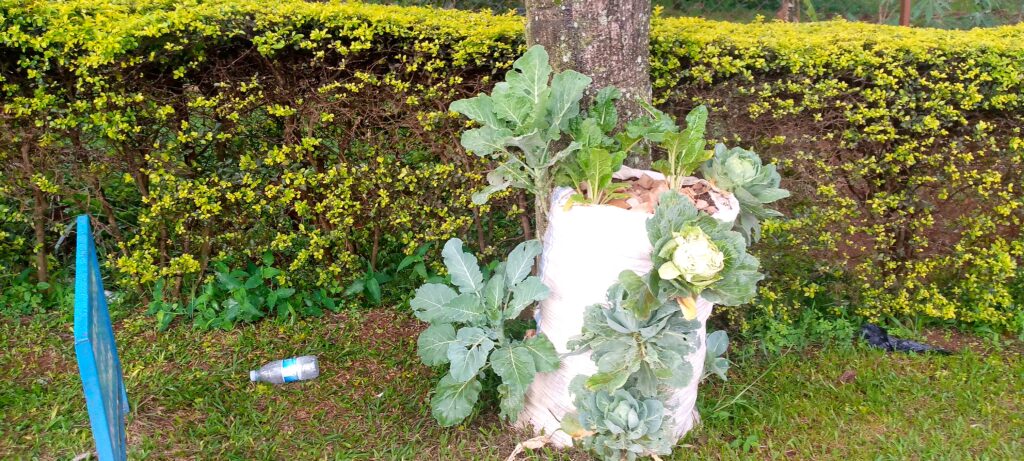By Jovita Mirembe
When most of us go for shopping, we are either given plastic bags from where we shop from or we buy plastic bags that we use to carry our items that we have shopped.
We then throw the plastic bag at the rubbish pit after taking out the shopped items for it to be burnt because its dangerous to the environment.
Emmanuel Kalema a vegetable farmer in Kamuli district says that instead of throwing away your plastic shopping bags, they can be reused as containers for growing cabbage on your court or the backyard garden for sale or for home consumption.
Kalema says that in order for your cabbage to form big heads, you will need to grow them in large containers because this gives them enough space to expand.
He says that this means that your shopping bag should be at least 12 to 18 inches in diameter for best results.
‘’ If the home owner decides to sell the cabbages, they can be sold between sh 500- sh 1500 depending on their size. I advise home owners or farmers to use kitchen and garden waste as fertilizers because they are organic and are the best options. Here no additional fertilizer is required’ Kalema says.
Another vegetable farmer Rita Nakimera from Gayaza says that cabbages especially red cabbage are very useful to humans because they raise levels of beta-carotene, lutein, and other heart-protective antioxidants.
She says that cabbages help lower oxidized (LDL) which is a rusty substance, that is linked to hardening of the arteries. In this way it eases irritation hence helping in preventing heart disease.
Nakimera says that there are people who have limited space at home and growing vegetables in plastics bags is a great option for them.

Below are the steps taken in growing cabbages in plastic bags
Get the plastic bag and fold it inside out up half of it
Add a layer of garden soil at the very bottom of your plastic bag.
Add a layer of garden waste will include dry leaves and grass, and then a layer of kitchen waste which includes anything from the fruit cores, peels, vegetable scraps as well as eggshells. The waste will slowly decompose over time and will provide the cabbage with much needed nutrition during the final stages of growth).
Add another layer of garden soil over the waste and then for the top ‘growing’ layer, mix your sand, compost and garden soil.
Transplant one seedling into the center of each bag and give it a good watering.
When transplanting just make a small hole in top layer with your fingers , place the root ball of your seedling in there and then cover it up with the soil.
Nakimera says that you can decide to plant cabbages in three parts of the plastic bag where you can make two holes on the left and the right and side in addition to the top on.
‘In approximately 71 days expect to see heads with green cabbages and in red cabbages small heads will be seen in 57 days.in about four to six months the cabbages will be ready for harvest depending on their development. Cabbages need a sunny site and firm soil water regularly if it doesn’t rain” Nakimera asserts.





